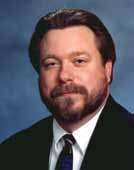It has been one of those months—the kind where there seems to be a permanent target on your back. It began with my partner trying to rent a car. We both travel a lot, and are members of this company’s highest-level frequent renter program. We are loyal to this firm for one reason: we want quick, consistent, efficient service when we get to the rental car lot at 10 p.m. after a long trip. While our profile is well notated with our preference for a Ford Fusion, it seems it is never read. As had happened many times before, we had to go through a long explanation and several requests before the customer service reps got us the right car—even though they had the tools to do their job right from the very beginning.
You would think that they would focus on these customer details. After all, the level of service is really the only differentiating factor in their business. Isn’t that true for most businesses? Very few companies operate as monopolies. Whatever product or service you provide someone else is also doing the same thing. Customer service is the one area that can earn repeat business and a premium rate. And technology can help build or break down that customer experience very quickly.
Now contrast this experience at the rental car station on a Sunday with our client meeting that Monday and Tuesday. It was at a small university, and during the second day we were scheduled to have drop-in hours for staff and faculty to visit with us in one of their distance-learning classrooms. While we were waiting, we wanted to review the system. The typical MS Windows user logon information was needed, so we called the help desk and asked for the user name and password. We figured we would be given the info over the phone, but the response from Mike was, “I will be right over!” In the two minutes and 30 seconds from the time we hung up, Mike took one more call, came across the quad and up to the second story of the building, down the hall to help us. The university staff made a point of stating how well the facility was supported, and when an issue came up a technician went right out to help solve the issue. Mike’s level of service certainly exceeded our expectations, and is the type of experience that helps to build loyalty and trust. His personalized service was a good complement to the technology with which we were interacting.
Now let’s look at my DMV experience five days earlier. It was time to renew my driver’s license, so I went online and completed the required paperwork almost two months before my expiration date. My license never arrived, and I was four days out from a three-week trip, with my expiration date popping up in the middle of it all. I checked the website again and it indicated that my license should have been delivered about three weeks ago but provided no other information of what to do. So I hopped in the car, drove past two shuttered DMVs, and arrived at a functioning office. They still weren’t able to give me a new license, only a paper extension.

What irks me about the DMV is they could take my money online, but providing any useful information was a challenge. As the tenth largest economy in the world (home to Oracle, HP, eBay, Yahoo, Google, etc.), why can’t California provide the same quality experience as a commercial site? Moreover, why can’t the customer service reps or the technology give me the information that I need?
All three examples utilize technology in providing customer service. And in each case the client’s expectation is different. For the car rental, staff should use the technology to provide efficient customer service. At the university, technology was supplemented by a personalized help experience. In the case of the DMV, the live customer service experience functioned separately from the technology, which was not up to date.
So which is the best model? Any can be successful. You can use technology to enhance personal interaction, use personal interaction to supplement technology, or keep both sides of the equation separate. The key is in matching what you provide to what your customer expects. And that is true no matter what you produce. The customer service experience is critical in any line of business, and how you integrate technology with it can make or break your customer’s perception of you and your company.
Steven J. Thorburn (SJT@TA-inc.com), PE, LEED-AP is co-founder of Thorburn Associates, an acoustical, technology, and lighting design firm with offices in Northern and Southern California and North Carolina.
Atlona Creates New Categories
SUNNYVALE, CA—Seeking a way to better serve its principal markets, Atlona Technologies has separated its products into three product categories: Atlona CE (consumer electronics), Atlona Si (systems integrator), and Atlona Signature (professional, commercial). Atlona Technologies has provided the AV industry with solution-based products that cover areas typically missing in most AV setups. The decision to form three branches within its overall product line was made in order to develop products that better serve the specific needs of each market.
LCD TV Market Grows
SANTA CLARA, CA—According to the latest DisplaySearch Quarterly Advanced Global TV Shipment and Forecast Report, total TV shipments in 2010 will reach more than 243 million units, a 16 percent increase from 2009. LCD TV shipments are expected to grow to 188 million units worldwide, up from 145 million units in 2009 as strong growth in Japan, Europe, and emerging markets like China offsets meager growth in North America.
Community Receives Patent
CHESTER, PA—Community Professional Loudspeakers has been granted a patent by the U.S. Patent and Trademark Office for its work on Carbon Ring Cone Technology. This innovative technology offers greater efficiency in loudspeaker design, where a ring of extremely rigid carbon fiber is placed around the outer edge of a specially designed cone, resulting in a structure that is both lighter and stiffer than a conventional cone. Carbon Ring Cone Technology is employed in Community’s VERIS, S-Series, and R.25 product lines.
